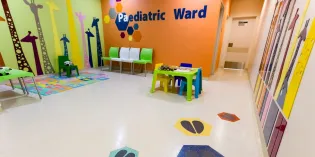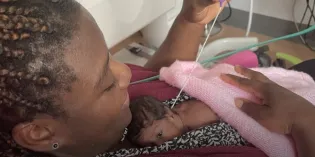We’ve all felt it: the tough decision, accompanied by that indescribable feeling in the pit of your stomach, while you decide whether or not a child can be sent home when there are no inpatient beds; the family who have to travel miles and miles past their local hospital to visit their child in hospital because they were transferred to the closest available inpatient bed; and the tragedies in the Paediatric Intensive Care Unit when influenza takes its toll.
The biggest challenge facing the NHS this winter is finding solutions to plug the gap in workforce shortages.
And so, the RCPCH Intercollegiate Committee for Children and Young People in Emergency Care Standards pledged to be the voice of children in winter and help its members share solutions to battle winter pressures in their units. As its members prepared their units for winter, the RCPCH surveyed members to better understand the challenges at the coal face. Overwhelmingly, the responses fell into three main themes: winter workforce challenges; shortage of beds and physical space; and rises in attendances and acuity of illness. Survey results make it very clear that the increased pressures we feel in paediatrics are part of a whole system problem.
The biggest challenge facing the NHS this winter is finding solutions to plug the gap in workforce shortages. The College’s most recent winter rota vacancies survey raised concerns about the sustainability of services and to trainee’s wellbeing, especially for those working on the middle grade rota. Our winter pressures survey highlights that these challenges are compounded by pre-existing rota gaps on both medical and nursing rosters. Too often than not, services are relying on locum staff to run the emergency department under constant pressure to source quality staff with the competences needed to look after children. The pressure mounts during out of hours when attendances to the department peaks and senior staff are tasked with covering multiple areas making it more challenging to provide timely senior decision making.
Most startlingly though, the survey has highlighted that when winter bites, the escalation plans used by Trusts and Health Boards to monitor risks can mean that staffing, resources and the space needed to look after children is reallocated to address pressures in adult services. Nearly half of survey respondents said they were either not aware of the escalation plans that were put into place last winter, they excluded children or were detrimental to providing care due to poor development or implementation.
Children are likely to pick up respiratory conditions during the winter... which means more children present to the Emergency Department
Increased demands on primary care during the winter can mean that parents will seek care for their children in the emergency department for problems that are best treated in the community, especially out of parent’s normal working hours. Children are likely to pick up respiratory conditions during the winter and this coupled with an increased acuity of illness in general, means more children present to the Emergency Department, where there are often insufficient resources to manage them. Caring for higher volumes of patients throughout winter can put a strain on an already under resourced workforce, that can result in burnout, fatigue and staff sickness.
The RCPCH pledges to help its members be the voice for children in winter pressure plans across the whole system.
What is overwhelmingly clear is that a whole system approach must remain at the centre of solutions needed to address these paediatric winter pressures. A sufficient and sustainable workforce model is needed to prevent bed closures in hospitals and resources need to be increased in the community as well as paediatric emergency and inpatient services. Crucially, children need to be explicitly considered and included in every Trust and Health Board winter pressures plan. It is simply not acceptable to take space and staff away from children at times of peak pressures when other solutions may be possible.
The RCPCH pledges to help its members be the voice for children in winter pressure plans across the whole system. Best practice examples are being collected to share solutions with colleagues working to deliver care to children in emergency departments which will be presented at the Winter Pressures workshop at the RCPCH Conference and exhibition on 14 May 2019. If you have any learning you would like to share with us, please email us at health.policy@rcpch.ac.uk.
Dani Hall is a Consultant in Paediatric Emergency Medicine and the Association of Paediatric Emergency Medicine representative on the Intercollegiate Committee for Children and Young People in Emergency Care Settings.










